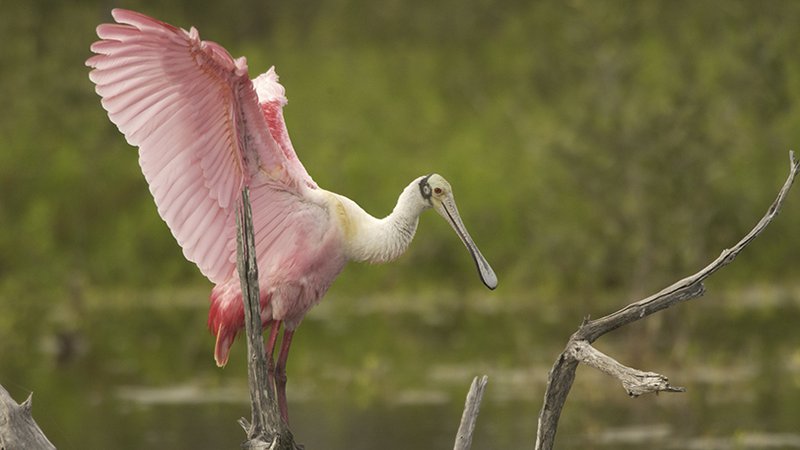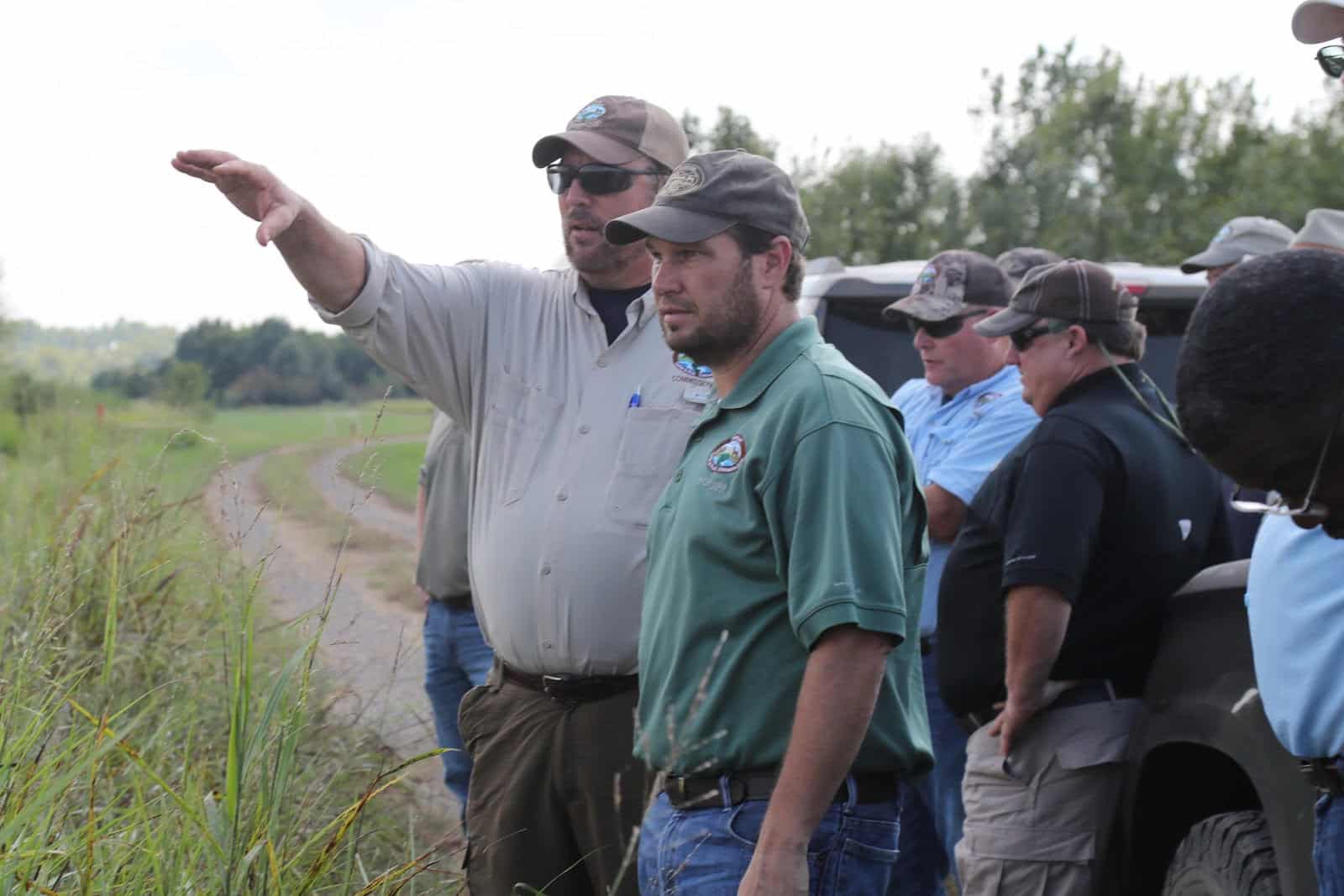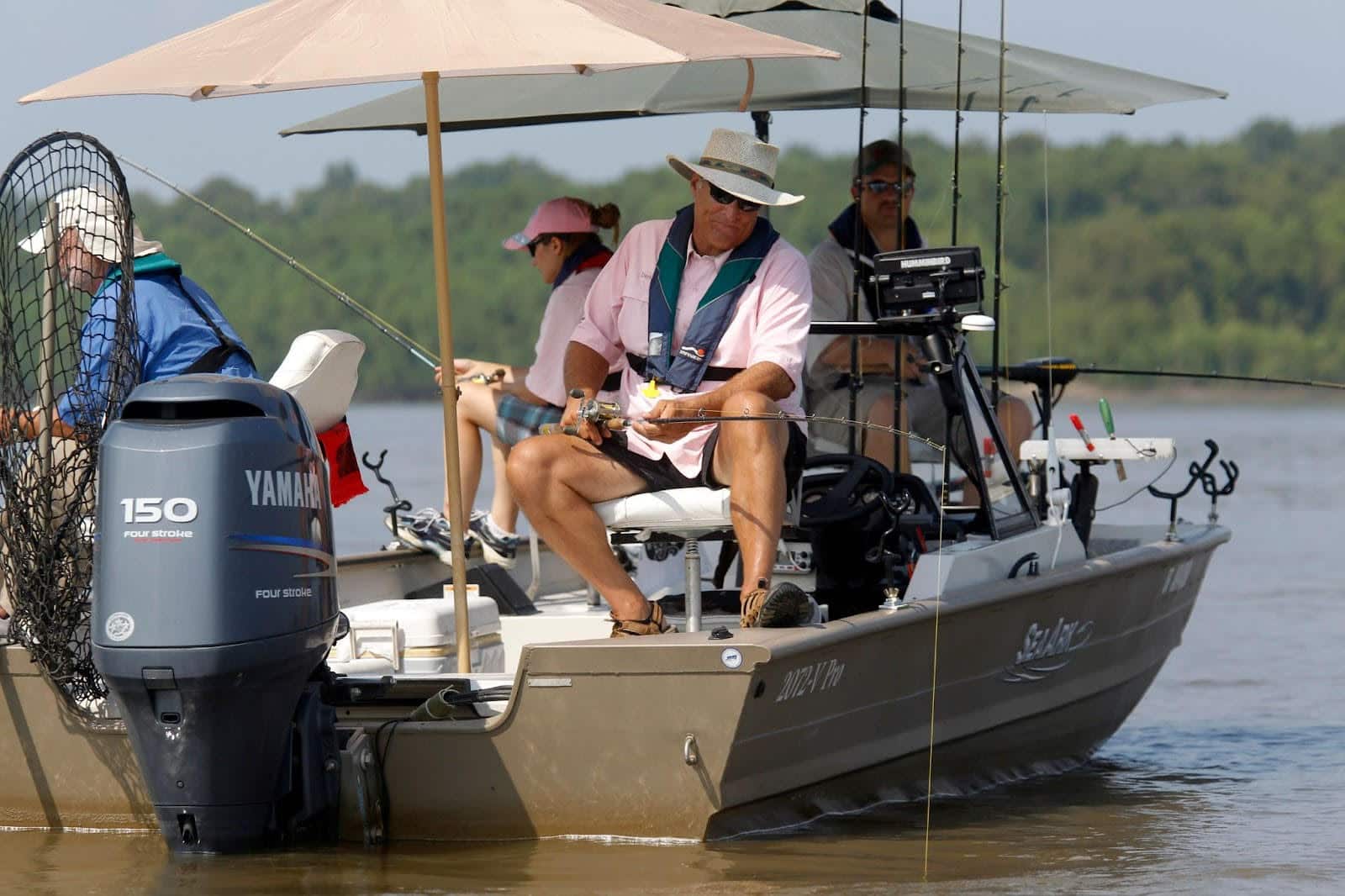Roseate spoonbills offer birders odd opportunities during final throes of summer
ON 10-18-2017

Oct. 18, 2017
Randy Zellers
Assistant Chief of Communications
With cooler weather finally on the horizon, many birders are itching to get out and view some of the Neotropical migrants that make their way through The Natural State each fall. But the roseate spoonbill makes an odd appearance during late summer and early fall, briefly travelling north to Arkansas for a visit before returning to its home in the tropics.
In the 1930s, market hunting for feathers to supply the hat industry had reduced spoonbill populations in the U.S. to an estimated 30 breeding pairs left. Today, more than 4,000 breeding pairs frequent the Gulf Coast from Florida to Texas.
Kirsten Bartlow, watchable wildlife coordinator for the Arkansas Game and Fish Commission, says viewing these interesting birds is worth a special trip to the wetlands in the southern half of the state.
Aside from the strange timing of this tropical wading bird’s arrival, the roseate spoonbill stands out from Arkansas’s usual lineup of shorebirds with its bright pink feathers. Many people may even think they’ve wandered upon a flamingo, until they get a closer look at its bill.
The broad, flat, obvious bill of the bird is designed with the same purpose as the bill of a northern shoveler duck – to strain small crustaceans, insects, snails and other small food items from the mud and water. The pink coloration comes from the algae pigments present in their food and intensifies as the bird ages and accumulates more of these pigments.
Roseate spoonbills live in the coastal marshes and mudflats of Florida, Texas and other Gulf Coast states. Much like herons and storks, spoonbills nest in colonies, sometimes as large as 100 birds. At beginning of breeding season, the entire flock may suddenly fly up, for no apparent reason, and circle the area. In courtship, male and female birds first interact aggressively, later perch close together, present sticks to each other, cross and clasp bills. After breeding season, some birds (mostly immature spoonbills) may stray north, offering Arkansans a rare glimpse at this interesting bird.
Birders interested in marking this bird off their life list should visit ebird.com or download the eBird app on the iTunes and Google Play stores to check out likely places where they’ve been spotted. Be prepared to wade or canoe, as these birds are most comfortable with their feet wet. Although they have been sighted as far north as Bald Knob National Wildlife Refuge, they are much more commonly found in the southern half of the state.
“The best places to find spoonbills are going to be in the southeastern and southwestern corners of the state,” Bartlow said. “Both areas have so much history and charisma that a trip to view these birds can be paired with an entire weekend of exploration.”
Bartlow says weekend adventures are just one of the benefits of bird watching that is making it an increasingly popular pastime.
“You really don’t need any special equipment to enjoy watching wildlife, and you can watch birds from anywhere,” Bartlow said. “Whether you’re sitting on your back porch watching cardinals and chickadees or trekking in the wilderness after a less common sighting, bird watching can be as relaxing or challenging as you want to make it.”
Bartlow recommends people interested in learning more about bird watching contact the AGFC to get signed up in the Wings Over Arkansas program.
“The program rewards birdwatchers with special pins and certificates for the amount of birds they’ve cataloged on their life list,” Bartlow said. “It’s a great, informal way to begin learning more about some of the animals we are blessed with in The Natural State.”
For more information about Wings Over Arkansas, visit https://www.agfc.com/wingsoverarkansas
Recent News

Former Chairman Neeley ‘got back more than I gave’
Jul. 28, 2025
Subscribe to Our Weekly Newsletter E-mails
Don’t miss another issue. Sign up now to receive the AGFC Wildlife Weekly Newsletter in your mailbox every Wednesday afternoon (Waterfowl Reports are published weekly during waterfowl season and periodically outside the season). Fishing Reports arrive on Thursdays. Fill in the following fields and hit submit. Thanks, and welcome!

